How much artificial dyes are in dried mango?
Mango is a sweet nutritious tropical and subtropical fruit. According to the Wikipedia, mango contains a variety of phytochemicals. The fruit pulp is high in prebiotic dietary fiber, vitamin C, diverse polyphenols, provitamin A carotenoids and omega-3 and -6 polyunsaturated fatty acids. Two dozens of different carotenoids were isolated from mango pulp, the most abundant of which was beta-carotene, which accounts for the yellow-orange pigmentation of most mango fruits.
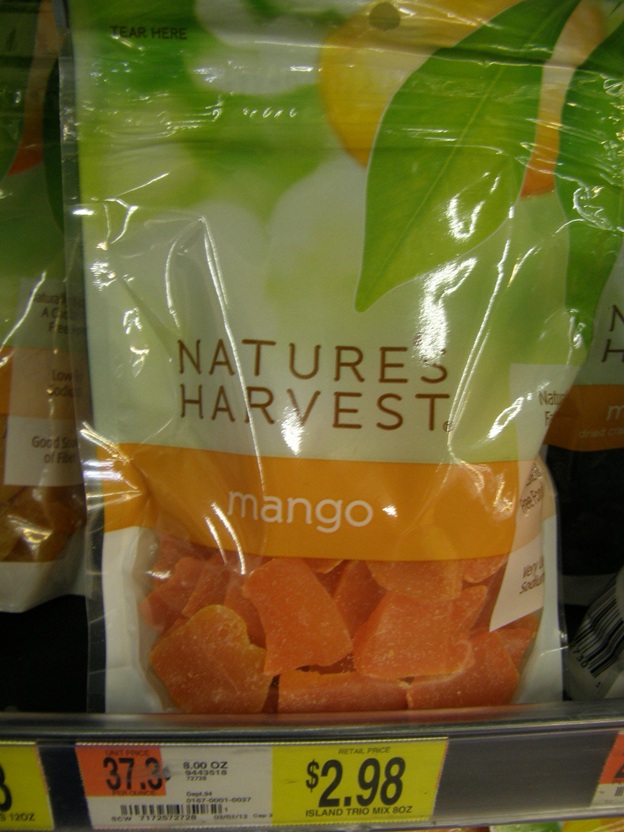 As you can see, mango is very rich natural gift with a potential of multiply health benefits. But it all goes wrong in our profit-driven world: Dried mango produced by unnamed company in Thailand and distributed by Amport Foods in Minneapolis is sweeter and brighter than natural mango because tons of sugar and artificial colorants are added.
As you can see, mango is very rich natural gift with a potential of multiply health benefits. But it all goes wrong in our profit-driven world: Dried mango produced by unnamed company in Thailand and distributed by Amport Foods in Minneapolis is sweeter and brighter than natural mango because tons of sugar and artificial colorants are added.
Combined concentration of the two artificial colors per gram was found to be 0.42 mg/g that was approximately half the amount detected earlier in Farmer’s Fruit Mix (0.70 mg/g) and Dried Papaya (0.87 mg/g).
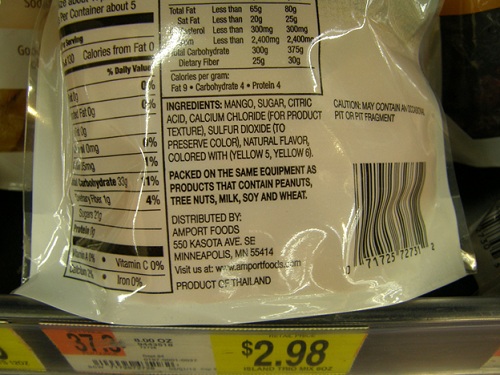 Based on the ingredient list, Dye Diet Calculator indicates Health Risk = 3.29, Nutritional Value = 0.21 plus 52% of added sugar by weight and 0 g protein. That’s how modern food industry turns good nutritious fruit into wasteful crap that costs you $2.98. And nevertheless they keep lying to you by giving this “sweet” text on the label:
Based on the ingredient list, Dye Diet Calculator indicates Health Risk = 3.29, Nutritional Value = 0.21 plus 52% of added sugar by weight and 0 g protein. That’s how modern food industry turns good nutritious fruit into wasteful crap that costs you $2.98. And nevertheless they keep lying to you by giving this “sweet” text on the label:
“Our products contain ingredients that you know are real and good for you. That’s we harvest our products from the source. Great tasting, good for you food comes from nature and great tasting snacks come from Nature’s Harvest.”
Obviously, food industry professionals consider sulfites (sulfur dioxide, which may trigger a number of symptoms including asthma) and two potentially cancer-promoting azo dyes as unquestionable ingredients of their “good for you” list. But we do know that they are NOT good for us along with 5 teaspoons of added sugar per serving! We still have a choice to reject them for our health and well-being of our families. Let’s do that!
Bottom line. Reading ingredients are vital for healthy survival in the present days. Alternatively, you can use the free Dye Diet Calculator to see Health Risk, Nutritional Value, caloric and sugar content of any processed food. If a product is not there, please help by introducing at least one of your favorite products and its ingredients into the free database. As dye-free alternatives you may consider other Nature’s Harvest fruit snacks available at Walmart:
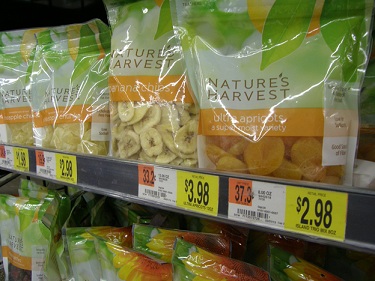 Here you go: Ultra Apricot, Banana Chips, Pineapple Chops, Mixed Berries and others come without artificial colors. Beware of Nature’s Harvest Island Trio: In addition to Yellow 5 and Yellow 6 it also contains Blue 1 artificial dye. Good luck, my friends!
Here you go: Ultra Apricot, Banana Chips, Pineapple Chops, Mixed Berries and others come without artificial colors. Beware of Nature’s Harvest Island Trio: In addition to Yellow 5 and Yellow 6 it also contains Blue 1 artificial dye. Good luck, my friends!
Category: Food and cancer, Food Dyes Exposure, Fruit snacks

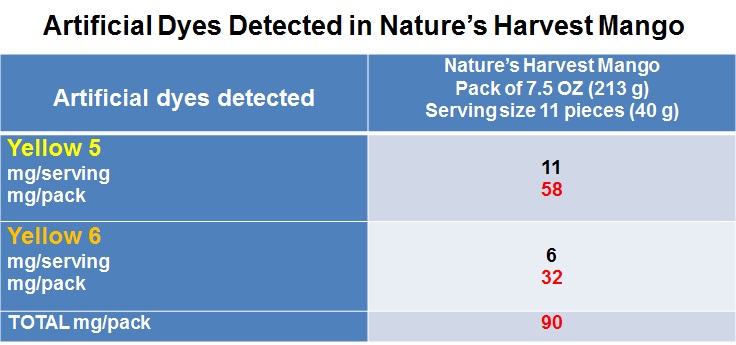




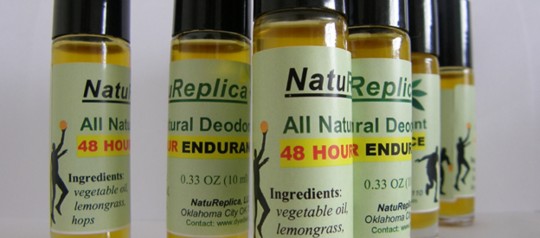
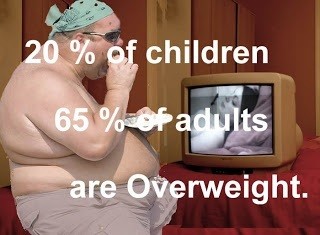
How the food industry turns nutritious and healthy food into wasteful crap:
1. The mango is preserved with sulfites.
2. To make it look brighter they added Yellows 5 & 6.
3. They add 5 teaspoons of added sugar (too much sugar can make you sick & stupid).
Yes.. Good summary!
Great site. We went dye-free about 9 years ago when we did a food journal and found that red dye #40 and yellow #4/5 (and nitrates) were causing behavioral issues with our son who was 5 at the time. Our daughter also showed signs of a reaction to dye, but it was so mild had we not been doing a food journal we never would’ve recognized the reaction-it just seemed like she was having a “bad day” slight weepy and irritable.
I work at a school and it really make me wonder how many children who have whatever “issue” are being affected by these dyes, which have been removed from children’s products in the UK but our FDA says they are A-OK. I see treats with dye, Gatorade, and fruit snacks, all in one lunch! I can’t believe the amount of dyes our children consume daily.
It’s not hard to find excellent dye free foods, right in the regular aisle of the supermarket. You just have to read the label and make a conscious choice.
Now that they are older, our kids both know how dye makes them feel and usually they will choose a dye free option if given a choice. Do we deprive our pre-teen and teenager of cotton candy at an event for example? No. But we choose blue if possible (no reactions noticed) and if not, we warn them that the next day they are still responsible for how they react… 🙂
Thank you!